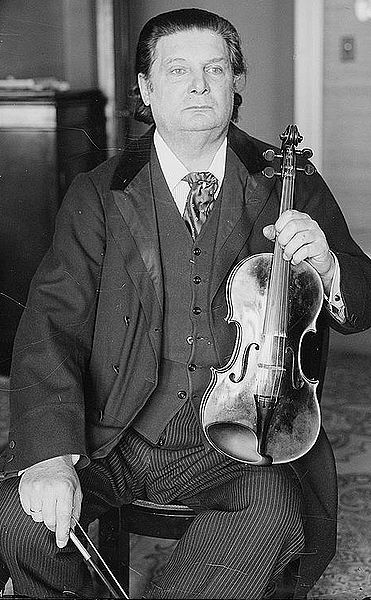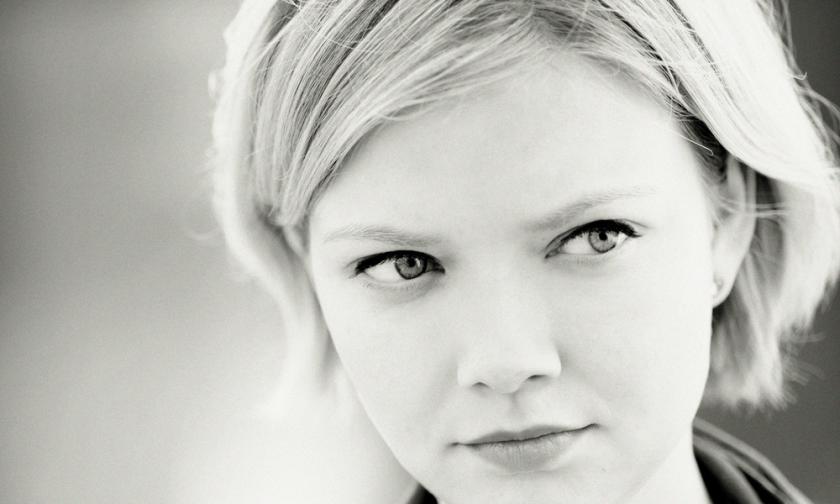Next week, the 28-year-old Russian-born violinist Alina Ibragimova will step into a studio, to record some of the most technically unforgiving works in her instrument's repertoire, the solo sonatas by the Belgian violinist, composer and conductor Eugène Ysaÿe (1858-1931). She has just performed them over two evenings at the Royal College of Music.
Each of these six works is dedicated to one of the major violinists of Ysaÿe's era, and portrays their styles of playing and their characters. The fourth, for example, dedicated to Fritz Kreisler, is a work of elegance and finesse. The sixth, in praise of one of the successors of Pablo Sarasate, the Galician violinist Manuel Quiroga, completes the cycle with a movement marked con bravura. After the huge challenge of these pieces, the violinist can at least celebrate a victory in extroversion, blazing sunshine and a matador flourish.
Ibragivimova is an instrumentalist with more or less no technical barriers to expression, and is absolutely ready to do this recording. She will in fact have given the very last outing to this set of sonatas before she does – surreally - in the quiet Lancashire village of Parbold.
Wednesday's and last night's performances were consistently compelling and absorbing. Small audiences witnessed an overwhelming display of the art and craft of violin playing at its most assured, focused and brilliant. This was a wonderful moment to eavesdrop on a key stage of the creative process, the final stages of her disciplined and completely focused build-up to the recording. The only possible complaint would be that the RCM's Recital Room, Room 101 (sic), where she gave the second evening's recital, suffers the distraction of sound leakage from practice and teaching rooms elsewhere in the college.
 That said, Ibragimova's concentration, her absorption in her craft were spellbinding (Ysaÿe pictured right). Maxim Vengerov has compared this set of sonatas to Formula One - “you have to know all the turns and curves, and even then it's not really safe" - but Ibragimova owns the road.
That said, Ibragimova's concentration, her absorption in her craft were spellbinding (Ysaÿe pictured right). Maxim Vengerov has compared this set of sonatas to Formula One - “you have to know all the turns and curves, and even then it's not really safe" - but Ibragimova owns the road.
What takes the breath away is the expressive range she finds in these pieces. She is able to elicit an unlimited tonal palette from her Venetian violin, by Anselmo Bellosio from 1775, on loan to her from the Georg von Opel Foundation, who also supported these concerts.
There are moments of repose and beauty – like the hushed, muted Malinconia section of the Second Sonata, or the magical "L'Aurore" opening to the Fifth. In these passages, Ibragimova gave the music all the space it needed to breathe completely naturally. She made the most of some ghostly passages in the first sonata too, turning them into adventures near the boundaries of silence.
The instruction "ad lib" in a short section of the finale of the Fifth Sonata was the invitation to invoke all kinds of fascinating and unpredictable abstract shapes, giving the passage the character of a free improvisation. And then there was the astonishing assurance with which she breezed through lengthy virtuosic passages of double-stopped thirds, fifths and sixths, all delivered with flawless intonation.
It's not just a clean clinical process, however. In the "Danse Rustique", which demands an invocation of the peasant roots of the instrument, Ibragimonva's tone was neither scratchy nor forced, but these were deliberately rougher timbres. In the first movement of the Second Sonata, she was digging so deep into the strings that three or four hairs from her bow came loose.
Perhaps Ibragimova's greatest strengths are the lucidity and authority of her phrasing. They brought an unforgettable moment of connection and balance at the start of the Fourth Sonata. With her eyes almost completely closed, betraying no emotion through her face, she brought out all the poetry, the near-symmetry and the cumulative glory of the four rising arpeggios which set that movement on its way. When the CDs do eventually appear, that is the moment I will want to revisit first.















Add comment